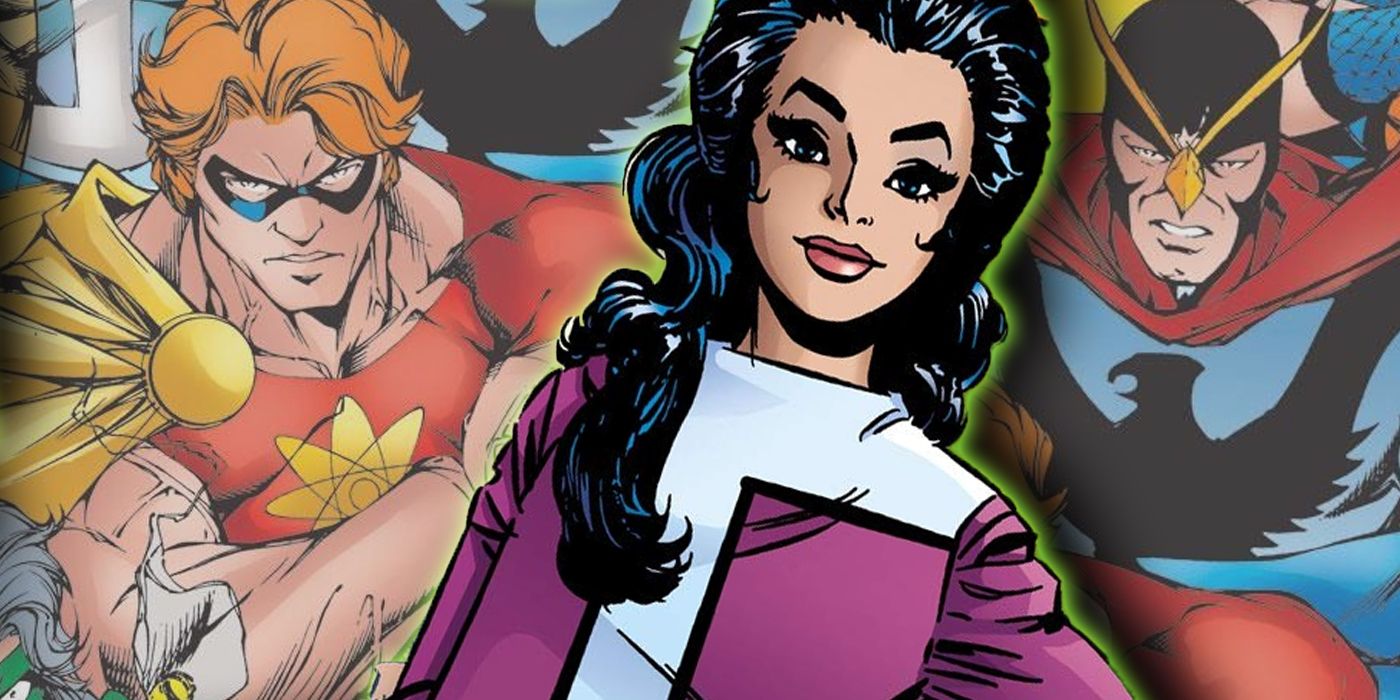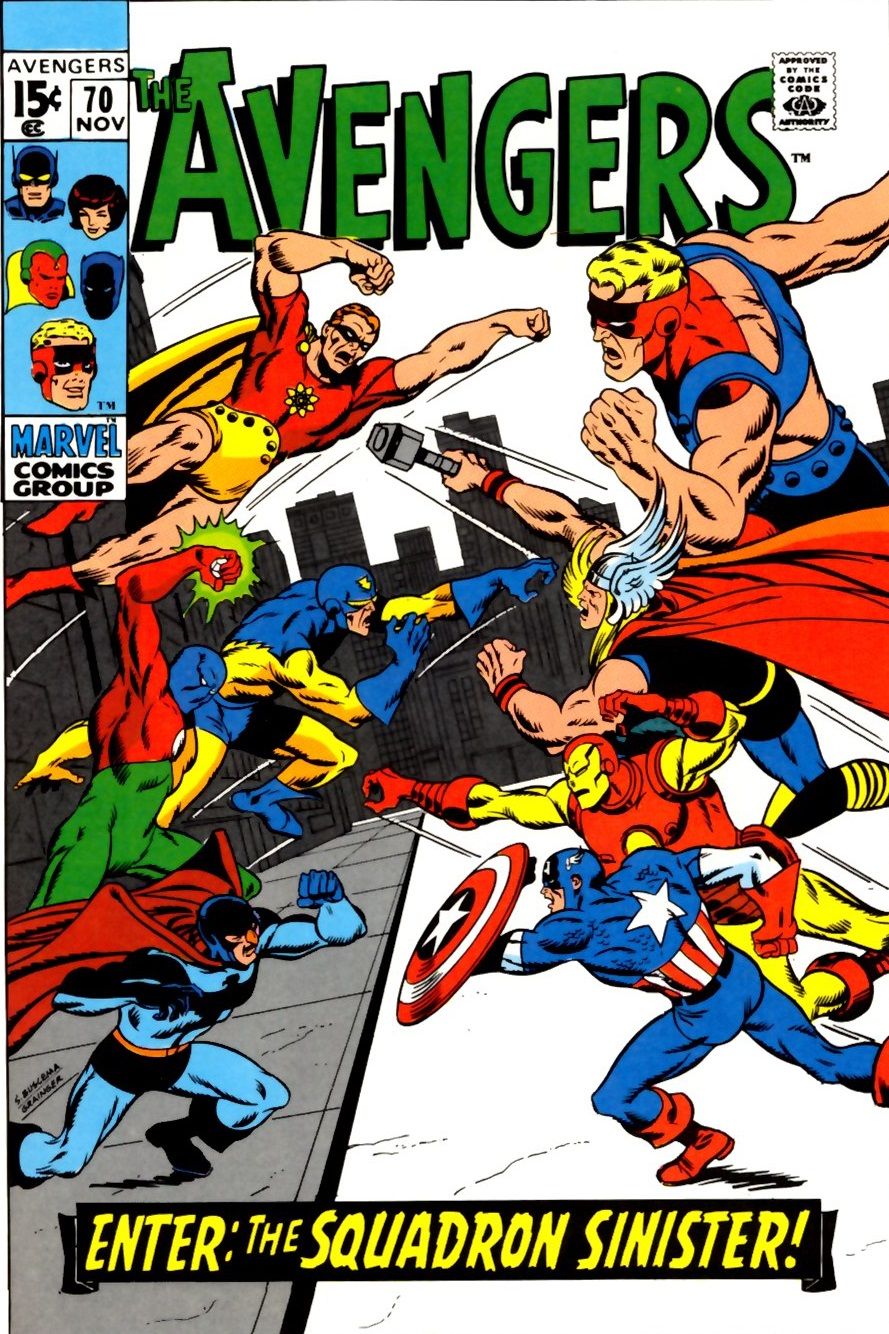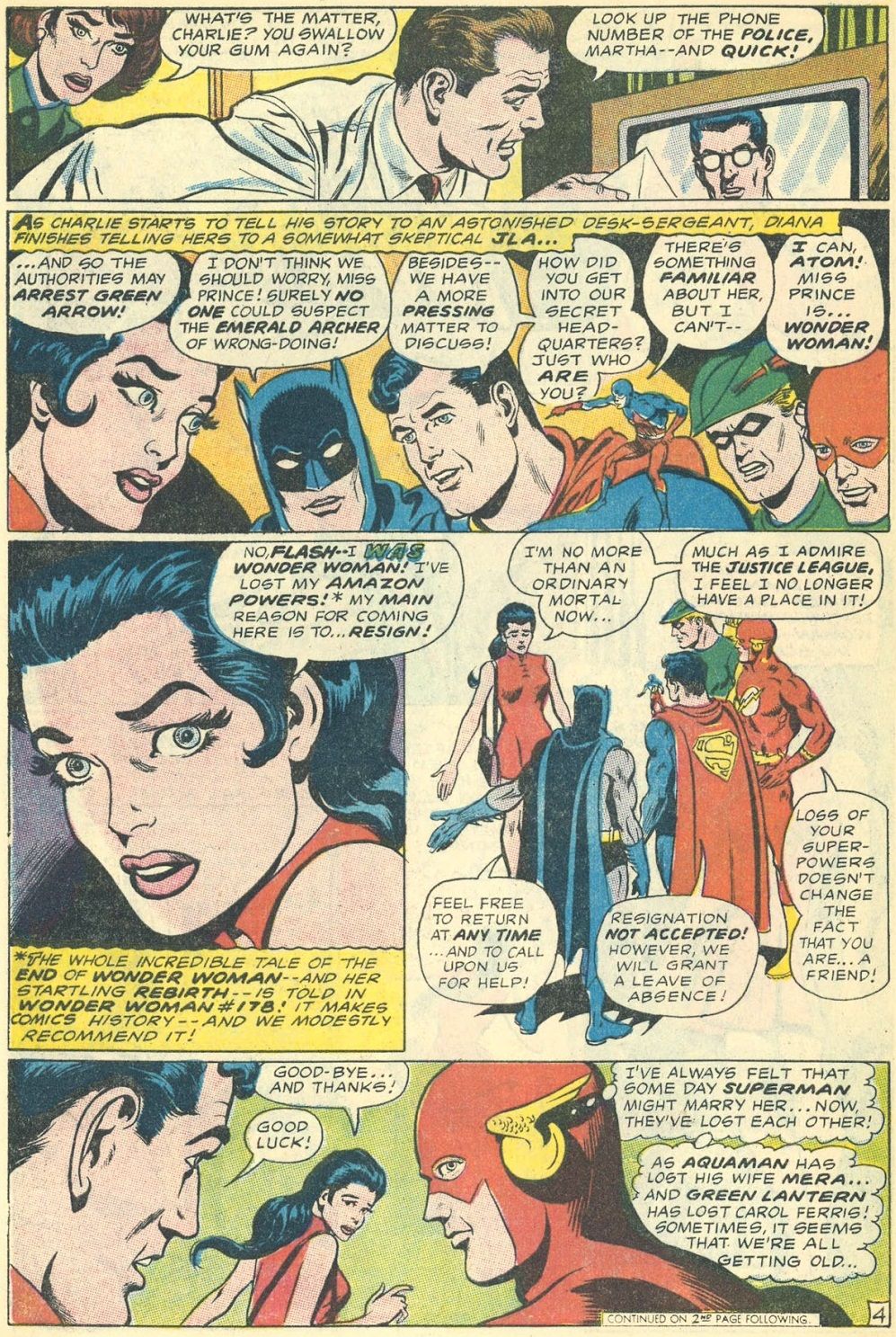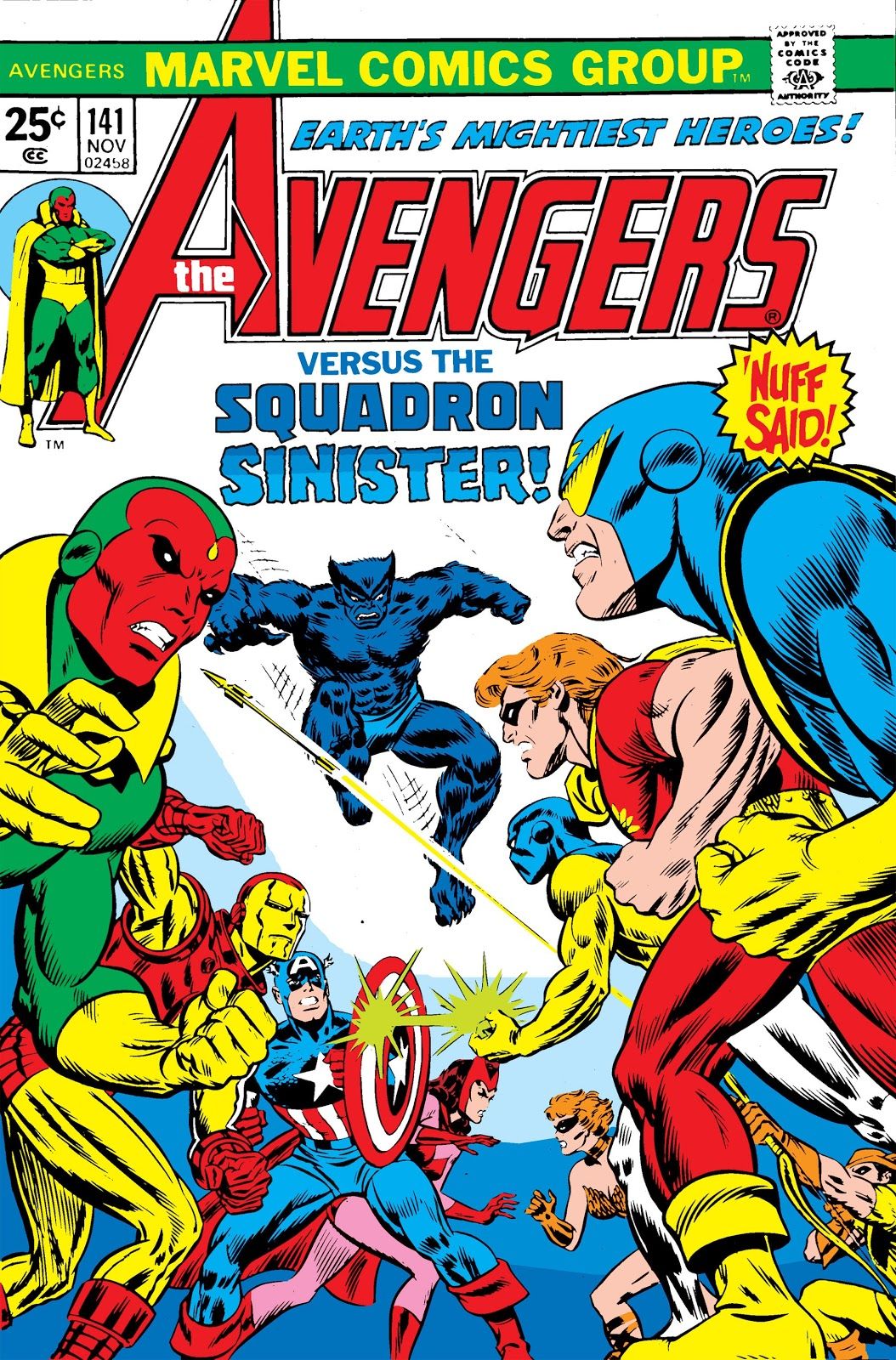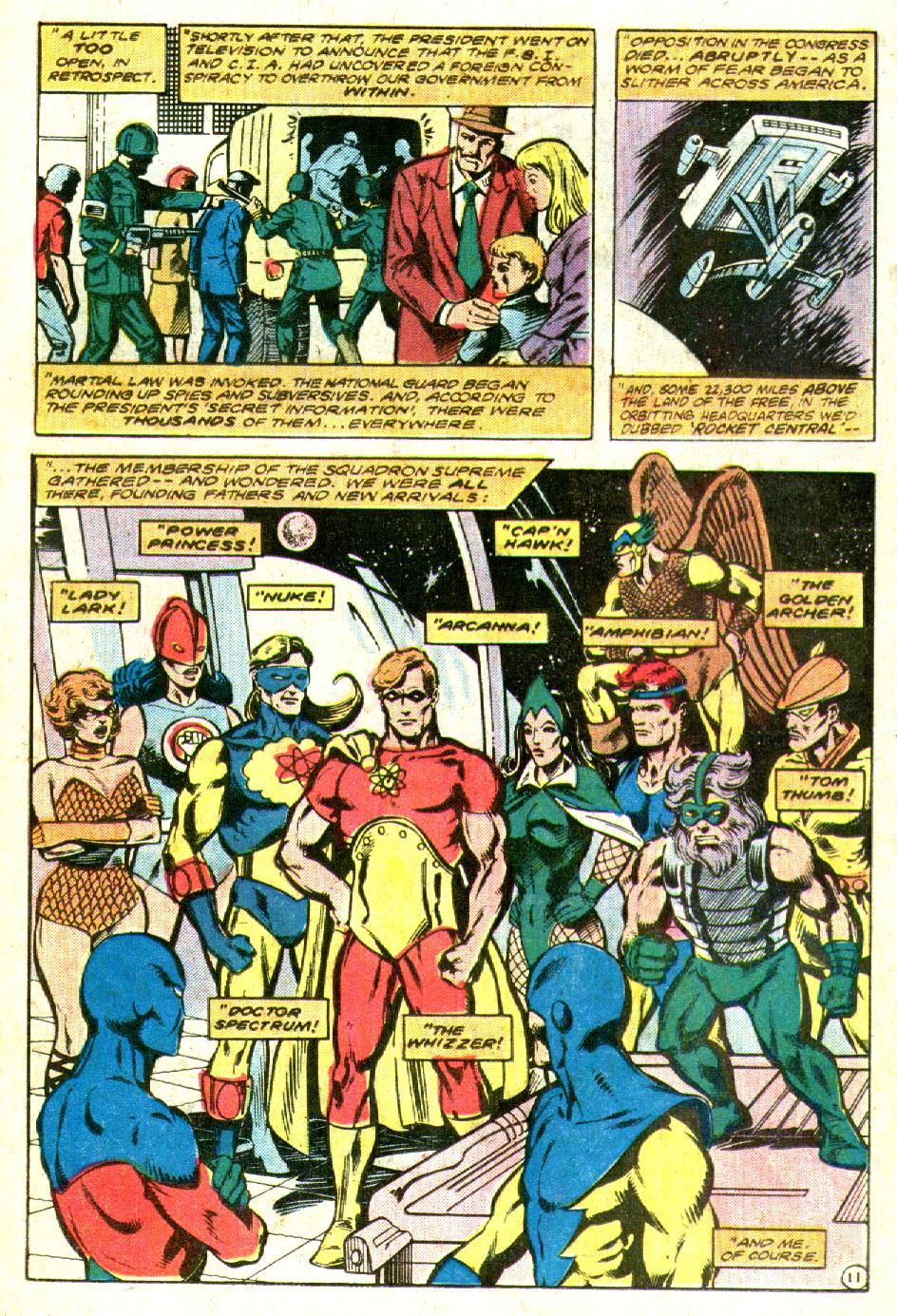In "Our Lives Together," I spotlight some of the more interesting examples of shared comic book universes. You know, crossovers that aren't exactly crossovers.
In this instance, we're going to do something unusual, as we're actually going to explain how the shared continuity of ONE comic book company affected the shared continuity of ANOTHER comic book company, specifically through the surprising impact that Wonder Woman's comic book adventures had on Marvel's Squadron Supreme.
As you may or may not know, the Squadron Supreme's history is built around a faux-crossover between the Avengers and the Justice League. In 1969, Roy Thomas was writing the Avengers and his friend, Denny O'Neil, was writing Justice League of America. Thomas was actually the person who directly recruited O'Neil into comics (O'Neil was working for a newspaper in St. Louis and would occasionally write about comic books in his columns and those columns drew Thomas' attention and so he recommended O'Neil try out as a writer for Marvel. O'Neil worked for Marvel for a few years before moving to DC in the late 1960s), so the two were close.
They came up with the idea of having a "secret" crossover between the Justice League and the Avengers. In Avengers #70 (by Thomas, Sal Buscema and Sam Grainger), the Avengers are forced by the Grandmaster and Kang to battle against a collection of supervillains known as he Squadron Sinister.
The Squadron consisted of Hyperion, Nighthawk, Dr. Spectrum and the Whizzer. Thor, Iron Man, Goliath and Captain America were matched up with those four villains. As you might have gathered, Hyperion was based on Superman, Nighthawk was based on Batman, Dr. Spectrum was based on Green Lantern and the Whizzer was based on the Flash. Over in Justice League of America #75 (by O'Neil, Dick Dillin and Joe Giella), O'Neil handled the faux crossover in a less obvious fashion. He had the Justice League face off against duplicate versions of themselves, just had each of the evil duplicates stand-in for the aforementioned quartet of Avengers (Thor, Iron Man, Goliath and Captain America). For instance, Evil Superman mentions that he's as strong as Zeus or Thor, evil Hawkman mentions that he's as strong as Iron, evil Atom notes that he can become a goliath and evil Batman uses a trash can lid as a shield.
You might wonder, though, why Wonder Woman, one of the most famous DC superheroes, was not among the Justice Leaguers parodied in the story. There's a very good reason for that...Wonder Woman wasn't ON the Justice League at the time!
Six issues earlier, in Justice League of America #69 (by O'Neil, Dillin and Sid Greene), Wonder Woman tried to quit the team but the others convinced her to just take a leave of absence. You see, in 1968's Wonder Woman #167 (by O'Neil, Mike Sekowsky and Dick Giordano), Wonder Woman decided to revamp her style and drop her superhero costume and in the following issue, she lost her superpowers and thus, "Wonder Woman" was now simply Diana Prince. She learned martial arts and became basically a badass sort of super spy. So she no longer felt like she belonged in the Justice League.
The "Diana Prince" era of Wonder Woman lasted just over four years, from mid-1968 until late 1972. Eventually, her previous writer, Robert Kanigher, was brought back to return her to her superhero identity (he did so in a very violent way, with Wonder Woman's mentor and martial arts teacher, I-Ching, getting assassinated by a sniper and Wonder Woman getting shot in the head, too, causing her to forget the "Diana Prince" era of her life and the Amazons gave her her powers and costume back and she went back to being Wonder Woman).
Well, guess what happened in those four years? The Squadron Supreme debuted! In Avengers #85-86 (by Thomas, John Buscema, Sal Buscema, Frank Giacoia and Jim Mooney), the Avengers found themselves transported to another dimension where they met the heroes of that world, the heroic versions of the Squadron Sinister, the Squadron Supreme! More members of the team were introduced in this story, and they were all riffs on Justice League members. Meanwhile, in another "faux crossover" at the time, Justice League of America writer Mike Friedrich (also a friend of Thomas) had the League face off against heroes from another dimension, as well, the Heroes of Angor. The heroes consisted of Jack B. Quick, Silver Sorceress, Blue Jay and Wandjina. Jack B. Quick was based on Quicksilver, Silver Sorceress was based on Scarlet Witch, Blue Jay was based on Yellowjacket and Wandjina was based on Thor.
Even when Wonder Woman returned to becoming a superhero, she did not automatically rejoin the Justice League. In fact, there was even a ten-part storyline in her title from early 1974 through late 1975 (the book was bi-monthly at the time, which is why a ten-part story took so long) where she insists that the League give her a series of tasks to perform to "earn" her way back on to the Justice League.
Before that story was completed, the Avengers once again met the Squadron Supreme in Avengers #141 (by Steve Englehart, George Perez and Vince Colletta)...
That Squadron Supreme were being controlled by the Serpent Crown. That storyline lasted until Avengers #149, by which time Wonder Woman WAS back on the Justice League, but naturally, Englehart wasn't going to just add a Wonder Woman analogue to the Squadron Supreme in the middle of a story.
The next big Squadron Supreme storyline was in 1982's Defenders #112 (by J.M. DeMatteis, Don Perlin and Mike Gustovich), and with Wonder Woman now back on the League for six years, she finally received her own analogue in the Squadron Supreme, as Power Princess made her debut...
Isn't that fascinating? DC continuity made it so that Power Princess didn't show up until a dozen years of the Squadron Supreme had passed!
Okay, folks, if you have a suggestion for another interesting piece of shared continuity, drop me a line at brianc@cbr.com!

